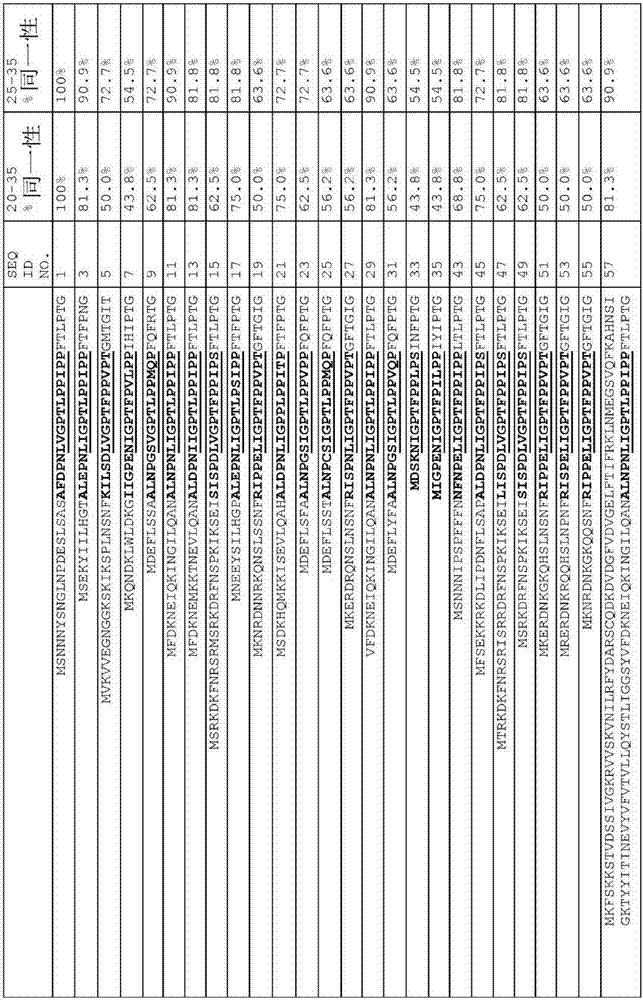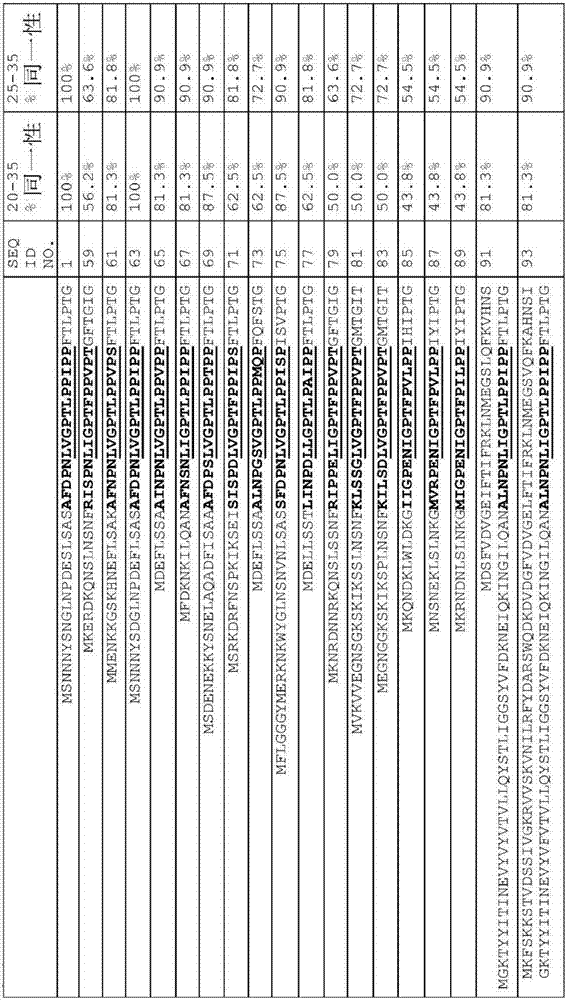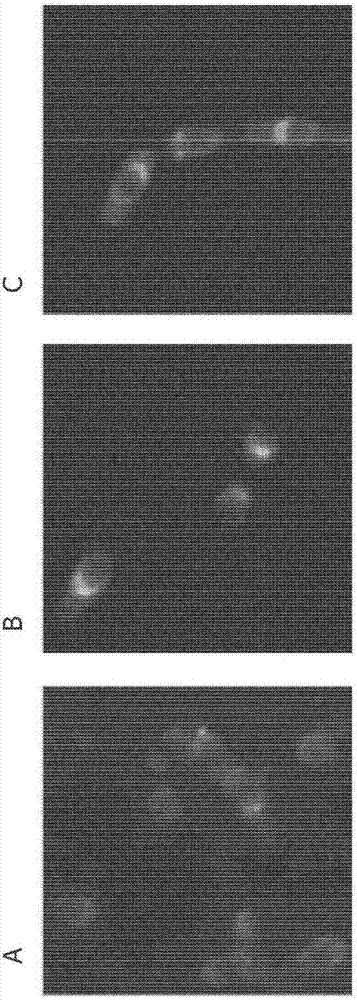Fusion proteins, recombinant bacteria, and methods for using recombinant bacteria
A technology of fusion protein and protein, which is applied in the field of fusion protein and can solve problems such as low survival rate
- Summary
- Abstract
- Description
- Claims
- Application Information
AI Technical Summary
Problems solved by technology
Method used
Image
Examples
Embodiment 1
[1095] Example 1. Stimulation of Plant Growth in Soybean Using Recombinant Bacillus cereus Family Members Presenting Lipase or Endoglucanase
[1096] The Bacillus subtilis lipase and endoglucanase genes were amplified via polymerase chain reaction (PCR) using the following primers as shown in Table 16 below:
[1097] Table 16
[1098]
[1099] To generate the fusion construct, the native bclA promoter of Bacillus thuringiensis DNA encoding the first 35 amino acids of BclA (amino acids 1-35 of SEQ ID NO: 1 ) was fused to the gene by splicing by overlap extension (SOE) technique. Correct amplicons were cloned into the E. coli / Bacillus shuttle vector pHP13, and correct clones were screened by DNA sequencing. Correct clones were electroporated into Bacillus thuringiensis (Cry-, plasmid-) and screened for chloramphenicol resistance. Correct transformants were grown overnight at 30°C in brain heart infusion broth, plated on nutrient agar plates, and incubated at 30°C for 3 days...
Embodiment 2
[1105] Example 2. Stimulation of Plant Growth in Maize Using Recombinant Bacillus cereus Family Members Presenting Endoglucanases
[1106] BEMD spores expressing endoglucanase were produced in the same manner as described in Example 1 above. Non-sweet corn was planted to a depth of 3.8 cm in 10 cm deep pots filled with standard loam topsoil. Dilute control spores and BEMD spores expressing endoglucanase to 1 × 10 in 50 ml of water 4 per ml and applied to each plant at planting. A water only control was also included. Plants were grown under ideal light using T5 lamps (54 watts) and exposed to 11 hours of light / day under controlled temperature conditions between 15.5-25.5°C. The plants were watered to saturation every 3 days during the one week trial. At the end of one week, the height of each plant was measured and the measurements were normalized to control B. thuringiensis spores.
[1107] The results are shown in Table 18 along with the standard error of the mean. Mai...
Embodiment 3
[1110] Example 3. Stimulation of plant growth in wheat using recombinant Bacillus cereus family members displaying endoglucanases or proteases
[1111] BEMD spores expressing endoglucanase were formed in the same manner as described in Example 1 above. BEMD spores expressing the E. coli protease PtrB were generated using a method similar to that described above in Example 1 and the following primers: ggatccatgctaccaaaagcc (forward, SEQ ID NO: 41) and ggatccttagtccgcaggcgtagc (reverse, SEQ ID NO: 42).
[1112] Winter durum wheat was planted to a depth of 2.54 cm in 10 cm deep pots filled with standard loam topsoil. Dilute control spores and BEMD spores expressing endoglucanase or protease to 1 × 10 in 50 ml of water 4 per ml and applied to each plant at planting. A water only control was also included. Plants were grown under ideal light using T5 lamps (54 watts) and exposed to 11 hours of light / day under controlled temperature conditions between 15.5-25.5°C. The plants wer...
PUM
| Property | Measurement | Unit |
|---|---|---|
| molecular weight | aaaaa | aaaaa |
Abstract
Description
Claims
Application Information
 Login to View More
Login to View More - R&D
- Intellectual Property
- Life Sciences
- Materials
- Tech Scout
- Unparalleled Data Quality
- Higher Quality Content
- 60% Fewer Hallucinations
Browse by: Latest US Patents, China's latest patents, Technical Efficacy Thesaurus, Application Domain, Technology Topic, Popular Technical Reports.
© 2025 PatSnap. All rights reserved.Legal|Privacy policy|Modern Slavery Act Transparency Statement|Sitemap|About US| Contact US: help@patsnap.com



